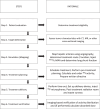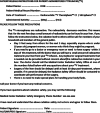AAPM Medical Physics Practice Guideline 14.a: Yttrium-90 microsphere radioembolization
- PMID: 37820316
- PMCID: PMC10860558
- DOI: 10.1002/acm2.14157
AAPM Medical Physics Practice Guideline 14.a: Yttrium-90 microsphere radioembolization
Abstract
Radioembolization using Yttrium-90 (90 Y) microspheres is widely used to treat primary and metastatic liver tumors. The present work provides minimum practice guidelines for establishing and supporting such a program. Medical physicists play a key role in patient and staff safety during these procedures. Products currently available are identified and their properties and suppliers summarized. Appropriateness for use is the domain of the treating physician. Patient work up starts with pre-treatment imaging. First, a mapping study using Technetium-99m (Tc-99m ) is carried out to quantify the lung shunt fraction (LSF) and to characterize the vascular supply of the liver. An MRI, CT, or a PET-CT scan is used to obtain information on the tumor burden. The tumor volume, LSF, tumor histology, and other pertinent patient characteristics are used to decide the type and quantity of 90 Y to be ordered. On the day of treatment, the appropriate dose is assayed using a dose calibrator with a calibration traceable to a national standard. In the treatment suite, the care team led by an interventional radiologist delivers the dose using real-time image guidance. The treatment suite is posted as a radioactive area during the procedure and staff wear radiation dosimeters. The treatment room, patient, and staff are surveyed post-procedure. The dose delivered to the patient is determined from the ratio of pre-treatment and residual waste exposure rate measurements. Establishing such a treatment modality is a major undertaking requiring an institutional radioactive materials license amendment complying with appropriate federal and state radiation regulations and appropriate staff training commensurate with their respective role and function in the planning and delivery of the procedure. Training, documentation, and areas for potential failure modes are identified and guidance is provided to ameliorate them.
Keywords: MPPG; Yttrium-90; brachytherapy; hepatic tumors; practice guideline; radioembolization.
© 2023 The Authors. Journal of Applied Clinical Medical Physics published by Wiley Periodicals LLC on behalf of American Association of Physicists in Medicine.
Conflict of interest statement
Members of TG356 listed below attest that they have no potential Conflicts of Interest related to the subject matter or materials presented in this document: Muthana Al‐Ghazi, Ahmet Ayan, Nathan Busse, Erli Chen, Shirin Enger, Stephen Graves, Robert Hobbs, Mary Ellen Jafari, Peter Kim, Nichole Maughan, Andrew Polemi, Jennifer Stickel.
Members of TG356 listed below disclose the following potential Conflict(s) of Interest related to subject matter or materials presented in this document: Nadine Abi‐Jaoudeh and Diane Alvarez received research funding from Sirtex Medical. Michael Chuong served as a speaker for Sirtex Medical. William A. Dezarn served as a consultant to Sirtex Medical.
Figures
References
-
- Dezarn WA, Cessna JT, DeWerd LA, et al. Recommendations of the American association of physicists in medicine on dosimetry, imaging, and quality assurance procedures for 90 Y microsphere brachytherapy in the treatment of hepatic malignancies: aAPM recommendations 90 Y microsphere brachytherapy. Med Phys. 2011;38(8):4824‐4845. doi:10.1118/1.3608909 - DOI - PubMed




